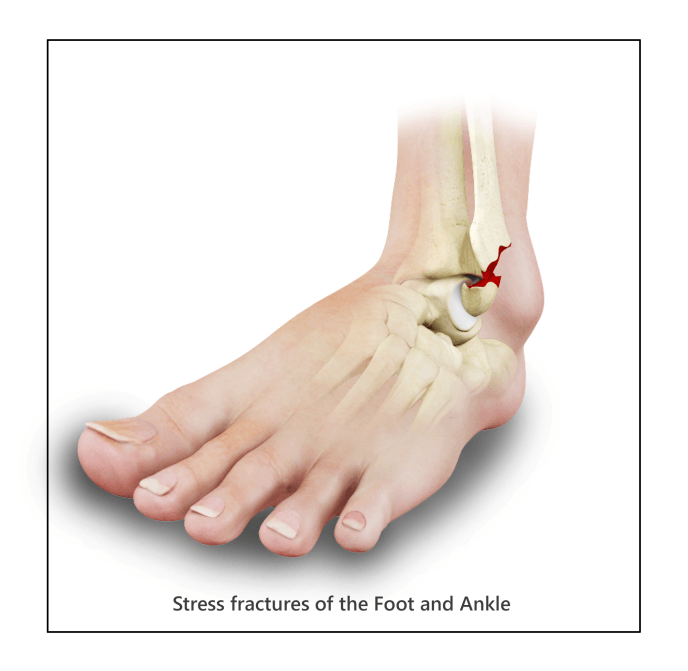Stress Fractures
A stress fracture is a small crack in the bone which occurs from overuse injury. It commonly develops in the weight-bearing bones of the lower leg and foot. When the muscles of the foot are overworked or stressed, they are unable to absorb the stress and transfer it onto the bone, which cracks under the pressure.

Stress fractures result from a rapid increase in the intensity of exercise or sports activities. They can also be caused by a change in the surface of a sports activity (such as changing from soft clay court to hard court in tennis), increased physical activity without adequate rest and wearing worn-out or uncomfortable footwear. Athletes participating in certain sports such as basketball, tennis and gymnastics are at a greater risk of developing stress fractures as they experience repeated stress on the foot each time they land on a hard surface.
The most common symptom of a stress fracture is pain, which usually worsens with activity and decreases with rest. Swelling, bruising, and tenderness may also occur.
Your doctor diagnosis the condition after evaluating your symptoms and risk factors, and performs a thorough examination of the foot and ankle. Diagnostic tests including X-ray, CT, MRI or bone scans may be required to confirm the fracture.
Stress fractures can be treated with non-surgical approaches such as rest, limiting physical activities, wearing protective shoe inserts, and immobilization with casts or braces in order to allow the injury to heal. Surgery may be required if the fracture does not heal completely with these methods. Your doctor makes an incision over the fracture area and uses internal fixators such as screws, pins or plates to hold the broken bones together until complete healing occurs.
Some of the following measures may help to prevent stress fractures:
- Start any new sport activity slowly and progress gradually.
- Cross-training or altering exercises can prevent overstressing one part of the body.
- Maintain a healthy diet and include calcium and vitamin D-rich foods in your diet.
- Wear well-fitting and comfortable footwear specifically designed for the particular sports activity and avoid using old or worn out shoes.











